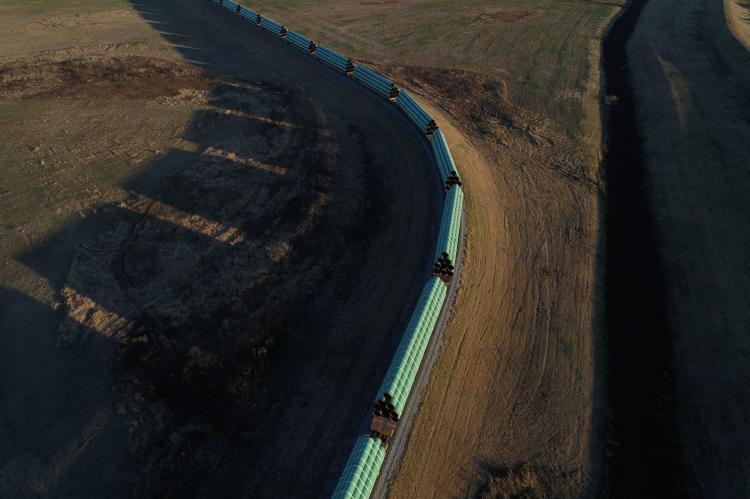The Trump Administration Gives Keystone XL A Strategic Victory

Though courtroom challenges still hang like a dark cloud over the $8 billion, 1,930-km oil sands pipeline construction project, the Trump administration today approved a right-of-way allowing Keystone XL to be built.
The pipeline would transport up to 830,000 barrels of crude oil daily from western Canada to terminals on the Gulf Coast. Project sponsor Trans Canada (TC) Energy said in a court filing that it would like to begin construction in the next several months.
Department of Interior Secretary David Bernhardt said his agency is comfortable with the environmental analyses that have been done and that TC Energy is ready for any contingency.
Bernhardt's critics say a damaging spill from Keystone XL is inevitable given the the length of the line and the many rivers and other bodies of water it would cross beneath. Just this past October and reported on in the PTJ another oil pipeline in TC Energy’s Keystone network spilled an estimated 383,000 gallons (1.4 million liters) of oil in eastern North Dakota.
TC Energy intends next month to begin mobilizing construction machinery to areas designated for worker camps and pipeline storage yards in Montana, South Dakota and Nebraska, according to its court filings. It also plans to start toppling trees along the route in areas of South Dakota. In April, the company plans to start building a 1.2-mile (2-kilometer) segment of the pipeline across the U.S.-Canada border. Construction of pumping stations for the line would begin in June.
An attorney for environmental groups that have sued to overturn Trump’s permit for the line said they will ask the judge in the case to issue an order blocking the new approval. The environmentalists argue that the pipeline supports the extraction of crude oil from oil sands, which pumps about 17% more greenhouse gases than standard crude oil extraction. They also oppose the pipeline because it would cut across the Ogallala Aquifer, one of the world's largest underground deposits of fresh water located beneath the Great Plains of the United States.

